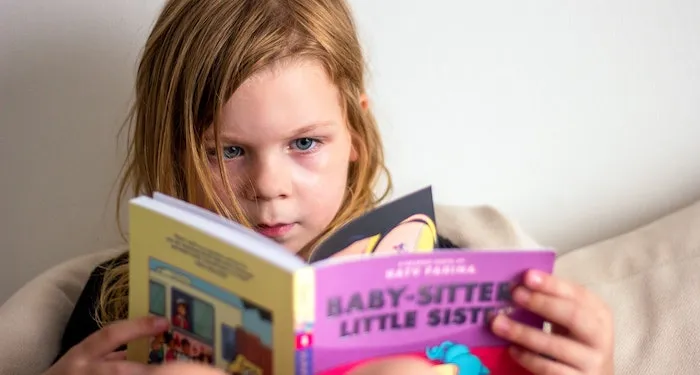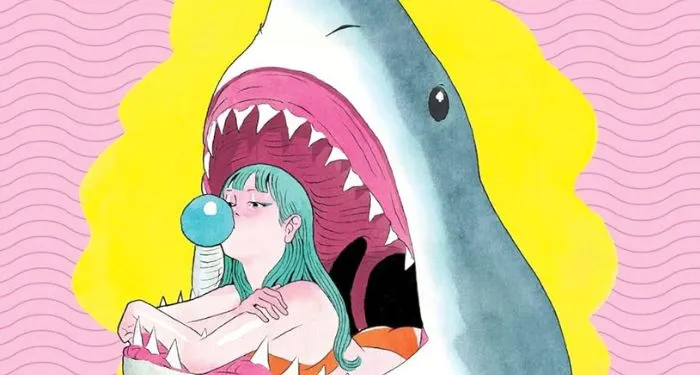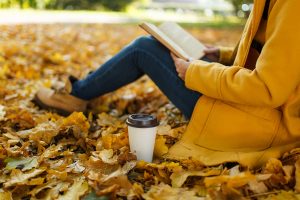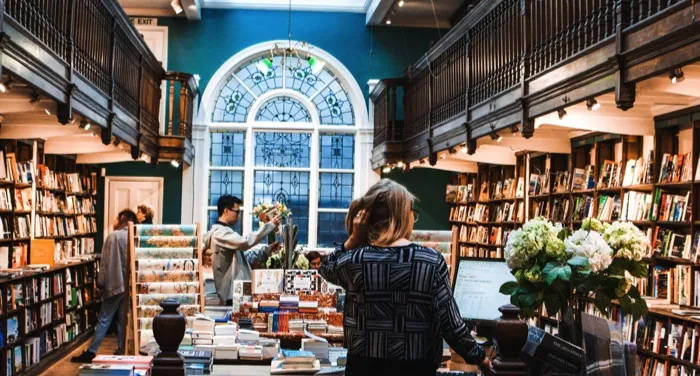On November 15, 2022, Emiliano Almada woke up as usual at 4:30 AM in his home in Fighiera, a modest town twenty-five miles south of Rosario on the banks of the Paraná River in Argentina. By 6 AM he and his brother were in his canoe, out on la cancha, “the soccer field”—the name fishermen give to the area in the river they clear of vegetation, tree trunks, and human-made debris—to cast their nets. It was a mild day, around 70 degrees Fahrenheit—a preview of the scorching summer ahead in the Southern Hemisphere. The silky brown water hid whatever lay beneath the surface.
They had pulled in some three hundred feet of empty net when Almada’s brother called out, “Look, there’s a fish stuck here!” Its gills were caught in the thin twine mesh, its body slightly bloated with gas. “It’s the same kind of fish that Gardel caught,” Almada yelled. The day before, his friend Pablo—nicknamed “Gardel” because his easy smile evoked the famous tango singer’s—had sent a picture of his catch to their WhatsApp group: a silvery fish most of them had never seen before. This one looked similar—but it was twice the size.
It can be hard to recognize things outside their familiar landscapes. But even far from the cool, crystal-clear waters, fjords, and rocky streambeds of the Northern Hemisphere, it was obvious to Almada that the creature rising from the warm, muddy Paraná was a salmon.
He took the fish back to his house, just four hundred feet from the shore, and posed for a photo with his eleven-year-old son, holding the catch in their hands, the floatline of his gillnet visible leaning against one of the unfinished plaster walls behind them. He sent it to his friends and within hours received dozens of messages. People came to see the salmon and take pictures with it. Individuals and retailers offered twice the price they pay for sábalo, the tasty, meaty fish native to the area. Almada was interviewed on local radio. Newspapers across the province featured the story; it even made the national news.
One of the calls came from the Paraná River Aquarium, the public authority on scientific research in the river. Almada kept the fish in the freezer, and two days later they picked it up and took it to Rosario. There, after extracting the animal’s internal organs and samples of its scales and fins, marine biologists identified it:
Species: Chinook Salmon (Oncorhynchus tshawytscha)
Caught location: Arroyo Seco
Date of capture: 15/11/2022
Fishing gear: Gillnet, deployed over the Río Paraná’s main waterway
Sex: Female, gravid
Weight: 11.76 kg
Length (total): 104.3 cm
Length (standard): 84.6 cm
How did a Chinook salmon end up in these inhospitable waters, a world away from its natural habitat? Where did it come from? What brought it there? The fish in Almada’s hands was as much a human-made creature as it was part of nature. It was a product of mighty technologies and market forces, and over its lifetime it witnessed both their transformative effects and the destruction they unleashed.
1.
The Salmonidae family of finned migratory fishes became distinct between 65 and 100 million years ago. Until about twenty million years ago the subgroup that includes salmon swam “in a northern sea above the continents,” writes Mark Kurlansky in Salmon: A Fish, the Earth, and the History of Their Common Fate (2020). Then ice cut off the route between the Pacific and Atlantic, and “the fish in each ocean evolved differently to suit the characteristic of their sea.” Salmon have swum in the Thames, the Seine, the Rhine. Fossils show them growing as long as three meters; one of the earliest found in North America dates back about 7 million years. Yet in this lengthy evolutionary history, salmon never crossed the equator of their own volition. Human attempts to relocate them to the Southern Hemisphere repeatedly failed—until the 1970s, in Chile.
Attempts to raise salmon in Chile date back to the late nineteenth century, but they only took off in the late 1960s and early 1970s, when salmon farming benefited from state-subsidized research in aquaculture.1 The Japanese government, seeking external sources of salmon to satisfy a growing domestic demand, struck an agreement with Chile, which hoped to diversify domestic caloric intake and prevent overfishing in its coastal towns. The Norwegian Institute of Marine Research joined the agreement and offered training in salmon farming, an incipient industry there. They were laying the groundwork for the global expansion of industrial aquaculture that would become known as the “blue revolution,” promising to expand human consumption of seafood without the risk of overfishing.
The reasons for choosing Chile were clear. In the wild most salmon species are anadromous: born in freshwater, they migrate to the ocean, where they roam for years until their reproductive instinct kicks in and they start their journey back to their exact birthplace to spawn and, in the case of the Pacific salmon, die. Because it has to harness these cycles in enclosed, controlled spaces, salmon farming requires the close proximity of three different ecosystems: freshwater for the early stage, estuaries for the fish’s transformation, and sea water for its fattening stage. The Chilean south, much like Norway’s western coast, has all three within a few miles.
Research and early experiments progressed slowly, but conditions in Chile changed after 1973, as Augusto Pinochet’s dictatorship made an aggressive push to liberalize agriculture. The public-private Fundación Chile offered technical and financial assistance to local and foreign investors in salmon farming, and the government otherwise invited the private sector to exploit nature with little environmental, legal, or sanitary regulation. By 1985 it had granted thirty-six licenses to salmon farming companies. By 1988 that total had risen to 117. It reached 1,353 in 2022. With 32 percent of the market that year, Chile has become the world’s second-largest salmon producer after Norway.
The explosive pace of the industry’s growth has been tied to dramatic environmental degradation. Detritus from farms has turned the seabed into a contaminated death zone, and the excessive activity of crowded fish has led to algae blooms and driven down shellfish populations. The sector has also been marked by weak labor regulations. Juan Carlos Cárdenas, the director of Ecocéanos, an NGO that monitors salmon farming in Chile, told me in a recent interview that the country has had the world’s highest mortality rate in the business for the past twelve years. A striking number of the divers who die working in the industry are hired through subcontractors that enjoy immunity from what regulations do exist. One of the most recent victims, on July 24 of this year, was Yonathan Vergara, who worked for a contractor called Servicios Marítimos Trapén that the company Blumar hired to work on the anti-seal nettings around its farms.
Without consistently enforced fallow periods between production cycles, which would provide time for restoring the water and seabed nutrients, for decades farms in Chile have packed unimaginable amounts of fish biomass into their pens and churned out ton after ton of salmon fillet, from 1,200 tons in 1985 to one million tons in 2023. The more tightly fish are crowded together in the service of this unrestrained growth, the more easily they spread disease, so companies administer antibiotics at an unprecedented scale: in 2008 the annual total reached 718,000 pounds, as much as six hundred times the amount used in Norway.
For the fish themselves, the outcome amounts to torture. We know that fish respond to pain and act with intention—seeking some things, avoiding others. They reach beyond themselves. One study on cleaner fish—which the farming industry seeks voraciously to gobble up salmon lice and parasites from farmed fish—found that they can recognize themselves in a mirror, as humans do.2 We also know that living in densely crowded conditions has significant effects, for example, on an Atlantic salmon’s brain development. Studies have shown how dramatically salmon farming increases an animal’s stress, diminishes neural proliferation, and buttresses traits such as boldness and aggressive feeding. One thing is clear: given the chance, salmon refuse captivity. They escape from pens whenever they can, and no wild salmon has ever been known to swim into those crowded, diseased enclosures.
*
Raising fish in dense pens was never the only form of commercial salmon farming in Chile. Early attempts at aquaculture, before the sector’s dramatic growth, took the form of sea ranching, a method that mimics the salmon’s migratory patterns by releasing immature fish into the wild and recapturing them on their return as adults. The agriculture and aquaculture entrepreneur Jon Lindbergh—one of Charles Lindberg’s sons—first tried out ranching techniques through his company Domsea Farms, a subsidiary of the chemical giant Union Carbide, based in Washington state. (Its name stands for “Domesticated Sea.”) In the mid-1970s he arrived in Chile hoping to put those experiments into fuller practice.
The fish would hatch in protected waters and be released “to forage and fatten at sea,” as Lindbergh wrote in a fishing industry newsletter. Of Chile, he declared: “A salmon pasture with extraordinary promise lies in the Southern Ocean.” Ranching, forage, pasture—in the language of the US’s western expansion, the region evoked notions of unlimited freedom and unfettered exploitation. The rationale for sea ranching was also eminently economic: it would avoid the costs of feeding, by far the most expensive part of farming.
As their site, Lindbergh and his local partner Ricardo Rodríguez chose Chiloé, an archipelago of around forty islands in southern Chile that offered easy access to freshwater pouring into the Pacific Ocean. With some of the highest poverty and unemployment rates in the country, Chiloé promised cheap labor and an absence of government control. Lindbergh “complained about excessive regulations in the US,” Rodríguez told me. “In Chile, there was no regulation, no idea of property over ocean resources, no limits to what we wanted to do…. It was the Wild West.”
The eggs for this ranching experiment came from a variety of places, notably the Willamette and Columbia Rivers in Oregon. Packed in Styrofoam, they were shipped to Santiago de Chile and from there to the island, where the newly hatched alevins, as the very young salmonids are called, swam out into the Pacific’s coastal waters. Most of them perished. A few returned. And an even smaller number strayed, attempting to breed somewhere else. Straying is a trait that all salmon have developed to explore new environments, which has proven crucial to the survival of the species. Yet it’s also high risk: while some fish colonize new territories, others die in inhospitable waters.
In Patagonia, salmon swimming free in the ranching experiment met those escaping from traditional pens. These fish, crammed together and loaded with drugs, break free into open waters more regularly in Chile than they do elsewhere. (During the first decade of this century, an average of one million salmon escaped from Chilean farms every year, fifteen times more than in Norway.) In places like Norway and Scotland, salmon farming became a crucial factor in threatening the very wild salmon stocks that it was supposed to protect, as farmed fish rich with antibiotics and genetic modifications escaped and interbred with wild ones, reducing their viability in the process. In Chile, too, salmon farming had a range of damaging ecological effects. But something remarkable happened, too: the strays from the ranching experiment—and to a lesser extent runaways from the pens—helped create a stable salmon population in the Southern Hemisphere, living and reproducing without human aid or control.
Domsea eventually gave up on ranching in favor of conventional farming. But as Lindbergh’s experiment petered out, the communities of fish it created outlasted the ranching operation itself, setting in fjords and estuaries in the Pacific and then swimming down rivers that crisscross the Argentine plateau until they found their way to the Atlantic Ocean. And from there, they might have ended up anywhere.
2.
Salmon don’t talk. Their experience isn’t available to us in words. To reconstruct a fish’s story, scientists turn to its otolith, the bone-like structure in its inner ear that helps it hear and sense vibrations, detecting obstacles and predators and food. Along with the genetic information provided by scales, the calcareous material that builds up in layers on an otolith’s surface, much like the rings of a tree trunk, records a detailed history: age, diet, water temperature and chemistry, reproductive cycles, exposure to pollutants.
Fascination with otoliths is ancient. In his History of Animals Aristotle described certain fish that have cranial sensory systems with a pebble at the center. He believed that, in winter, “owing to the stone, they get frozen with the cold and are thrown up on shore.” People have collected otoliths for millennia. Today the Norwegian Institute of Marine Research catalogs data from hundreds of thousands of otoliths from cod, haddock, and saithe, collected by fishers and anglers across Europe over more than a century. Earlier generations of fishermen and researchers had preserved them in matchboxes, toothpaste containers, bags, or tobacco tins.
But unlike trees, fish move. A tree ring tells you what happened in one place. An otolith ring tells you that something happened—but where? This is particularly difficult to pin down for salmon, who never stay put. More than a decade ago Esteban Avigliano set out to answer that question. A biologist in the College of Veterinary Medicine at the public, tuition-free University of Buenos Aires, he studies fisheries, migratory patterns, and invasive species in Argentina. To decipher a fish’s journey, Avigliano and twenty-three colleagues sample the region’s lakes, streams, rivers, creeks, estuaries, and coastlines in different seasons for years.
They also fish some salmon and collect carcasses from the riverbeds, both whole fish and their parts: scales, guts. And, of course, otoliths. Then they match the chemical residues stored in the otoliths with a database of water samples. The method is called isotope geochemistry. A pollutant, for example, leaves a trace in an otolith’s isotope; the water samples say where that pollutant was; and the otolith thereby becomes a kind of retroactive GPS, showing where the fish traveled and when.
This information—which can be used to track migrations, predict how invasive species will spread, and study how ecosystems respond to human activity—is worth millions to fishing companies, tourism operators, policymakers, and local communities. Yet it would be impossible to guess as much by seeing Avigliano’s lab, which is little more than a cubicle in a run-down building of the Veterinary School. A window is held together with duct tape; walls are flaking; thousands of fish samples sit in makeshift containers. His team has faced years of budget cuts, especially under the libertarian government of President Javier Milei. Less than a hundred feet from Avigliano’s office is the preserved classroom of Bernardo Houssay, the Argentine physiologist who discovered vital hormonal functions and in 1947 became the first Latin American Nobel laureate in science. “Science is not expensive,” Houssay once warned. “Ignorance is.”
*
We may never know what compelled the salmon that Almada caught to enter the Paraná River, but we do know that she wasn’t the first. Since salmon farming began in Chile, the fish have had a sporadic presence along the southern Atlantic coast. For decades scientists shared anecdotal evidence at conferences: one Pacific salmon washed ashore in Uruguay in the late 1990s; fishermen caught another off southern Brazil in 2002. The first record of a salmon in the Paraná is from 2018. Most of these fish came from wild communities formed by those early ranching experiments in the 1980s. Some of the previous Paraná salmon were eaten, sold, or discarded. Others were sent to the Paraná Aquarium for study.
Months after the Aquarium picked up the fish at Almada’s house, they sent her otolith to Avigliano in Buenos Aires, who shipped it to the Géosciences Environnement Toulouse in France. The lab, equipped with laser technology to segment an otolith down to the millimeter, returned it in hundreds of tiny bits, at which point Avigliano matched the chemical composition of each segment with his library of water samples. Only then did the salmon’s life—her true story—come into view.
The salmon hatched between March and June 2018 in the Gallegos River, a watercourse crossing some two hundred miles of Santa Cruz province—the southernmost continental land in Argentina—from the border with Chile to the river’s estuary in the Atlantic. Genetic analyses have shown that salmon from the nearby Santa Cruz River have ancestry in the Willamette and Columbia Rivers, just like the fish that Lindbergh introduced in 1979. Our salmon, Avigliano speculated, most likely also descended from one of those colonies that settled in the Argentine Patagonia probably ten or more years after they broke loose from the ranching experiment in the Pacific. For this salmon, life was a journey from the river to the sea, against the current and through rapids, cascades, creeks, and streams. Her otolith showed the change from freshwater to saltwater when she was around eight months old—the moment she made her way into the ocean at the tip of the continent.
Then, for three years, roughly from 2019 to 2022, she roamed the South Atlantic. This is a transformative time in a salmon’s life, and she passed into adulthood under ideal conditions. During that first year, she adopted a diet based mostly on anthropoids like spiders and small insects as well as galaxiids and other small fish. Once in the open sea, salmon become voracious eaters, lingering wherever they find the best food and temperature. She fed on sardines and squids and octopuses over thousands of kilometers of Patagonian water—a diet not too different from that of the region’s Magellanic penguins. Her body grew more than a hundredfold.
After those three years, the arrival of sexual maturity triggered the behavior for which she had been preparing her whole life: the return journey to spawn. But she strayed. Rather than returning to the Gallegos, she swam north for over 2,200 miles. During migration, salmon stop eating. Their stored fat fuels their relentless movement, and in the ocean, Avigliano estimates, they can average up to forty miles per day. To her left stretched Argentina—first the arid plains of Patagonia, then the coastal towns of the Pampas, and finally the industrial suburbs of Buenos Aires province. Eventually she reached the basin of the Río de la Plata, the widest estuary on earth, with a maximum width of 135 miles where the Paraná and Uruguay rivers drain into the Atlantic. On the southwest side of the basin lay the sprawling megalopolis of fifteen million people that includes Buenos Aires and its extended outskirts.
Her otolith shows that she entered freshwater in early November, leaving the ocean behind for her final journey. In freshwater a salmon’s pace slows to thirty miles per day at most—a bit more than a marathon. Avigliano estimates that it took her three to four weeks to cover the 250 miles from the Río de la Plata basin to Arroyo Seco. As she did, she passed through utterly unfamiliar scenery, a landscape being remade by the forces of global trade at an unprecedented speed.
3.
Measuring more than three thousand miles from its Brazilian headwaters to its mouth at the Río de la Plata estuary, the Paraná is the eighth-longest river in the world and second-longest in the Americas after the Amazon (the Missouri, the longest in the US, is 2,341 miles). It’s a vast body of water, reaching roughly forty miles in width and feeding a network of thriving wetlands across Brazil, Paraguay, and Argentina. Paraná means “relative of the sea” in Guaraní, the language spoken by those who have inhabited its banks for millennia. By the time of the European conquest, the guaraníes, chanás, charrúas, timbués, beguás and dozens of other groups lived along the river’s coasts. In 1527 the conquistador Gaboto founded Sancti Spiritus—the first European settlement in the current territory of Argentina—near the Paraná, inaugurating a long history of violence that included the displacement, killing, or subjugation of the region’s native populations.
Like many rivers in the Western Hemisphere, the Paraná captivated the imagination of nineteenth-century reformers. In 1850 Domingo Faustino Sarmiento—Argentina’s seventh president and a founder of the modern liberal state, who had traveled the US—envisioned it as the backbone of a modernizing nation, much like “the Ohio, the Mississippi—desolated and almost unexplored rivers just twenty years ago, now crisscrossed by four hundred steamers and twenty thousand sailing ships.”
The most important port on the Paraná—located in Rosario, Argentina’s third-largest city—had risen to prominence within a decade of Sarmiento’s reverie, but it wasn’t until 1905 that the river truly became an agricultural export hub. Most of the wheat, corn, and cattle that turned Argentina into a prosperous country was loaded in Rosario from the shores of the Paraná. By 1914 the export value leaving Rosario was higher than that of any other port in the world. In the hands of major landowners and traders, the port represented the power of the Argentine oligarchy. As it expanded in the following decades, it generated jobs and economic activity, becoming a material and symbolic center of the region of the Mesopotamia.
The Paraná is also fundamental to the region’s cultural identities, which have long been shaped by human interaction with its wetlands and by the distinctive dark brown color of its clay- and lime-rich sediments. “We have the same color, the river and me,” says Julián Aguilar, a fisherman, in Paraná Extremo, a multimedia project about the river’s ecosystem led by the environmental journalist Jorgelina Hiba, with whom I collaborated to conduct interviews with Almada and other laborers on the river. From industrial workers in the era after World War II to farmers who’ve grown fruits, rice, and cereals for centuries, the brown river is a source of belonging. This is especially true for fishermen. Their cultures differ along the river’s course from region to region, but they all return to the basics of independence and association, coming together in small groups to contend with the dual threats of harsh conditions and subsistence-level incomes. In 1998 the Argentine singer-songwriter Jorge Fandermole wrote “Stillwater Prayer” (“Oración del Remanso”), a well-known song devoted to the Paraná that conveys a fisherman’s hopes for a good catch:
Christ of all our nets
Don’t leave us bereft
Grant our hooks and lines
The fullness of your smile.
Don’t think that we’ve lost sight of you
Life’s hard and sadness blocks our view
Our bodies taut, our only thought of dying.
Old man river waters, bear our song far long,
Light’s in the sky and we’re out fishing to survive.3
By the time they encountered one another in the Paraná, both Almada and the salmon had felt the transformative effects of global trade. Almada, now thirty-six, talks in a soft voice, with the distinctive accent of the lower classes living in the coastal regions of the Mesopotamia. He began fishing at eight, when his family could no longer afford new school shoes. “You’d throw the net and fill the canoe,” he says, remembering the river’s bounty. “You’d catch a hundred ten-pound shads a day. Dorados, catfish, everything. Today, I went out early and got just three. And they were three or four pounds each.”
Humans have fished since the beginning of our existence, and for most of it our tools, as Brian Fagan once noted, have remained remarkably unchanged: “the net, the spear, the hook and line, and the trap.”4 Industrial fishing, particularly since the 1940s, changed the rules. Bottom-trawling—carried out by factory boats with onboard processing and freezing facilities—indiscriminately swept up everything. It took less than three decades of large-scale commercial fishing for humans to catch more fish than could naturally reproduce, bringing some species to extinction and severely depleting fisheries worldwide.
In the Paraná this trend became especially evident after the 1990s, when the government expanded the volume of freshwater fish it allowed for export. According to Paraná Extremo, between 1994 and 2004 shad exports from the Paraná rose from 2,785 to 32,000 tons. The average weight of fish dropped accordingly. Large industrial fleets displaced artisanal fishermen, and processing and freezing plants spread along the banks. These factories offer a stable income to locals unable to survive using the traditional methods, as fisheries shrink to historic lows. Those who still fish, like Almada, often sell their catch to the industry out of financial necessity, and at a considerable cost: “industrial buyers offer me 200 pesos for a fish that I can sell at 400 to a costumer. But they buy everything.”
*
In the Paraná basin, Almada’s salmon encountered a crucial highway for the global food industry. Between September and November of that year, 1,024 naval vessels traveled the river, roughly ten per day. Many were bulk carriers—up to 300 meters long and 48 meters wide—each transporting as much as 40,000 tons of grain and oil. Greater Rosario was, according to Paraná Extremo, the second-largest agricultural export node in the world in 2022, behind New Orleans. More than half the world’s production of soybeans—roughly 170 million tons in 2022—flows down the Paraná from Brazil, Paraguay, Bolivia, and Argentina. Syngenta, one of the agrobusiness companies behind the soy boom in South America, dubbed the area “the United Republic of Soy.”
The soy is destined for consumption both by humans and by domesticated animals all over the world, including salmon. The most expensive part of salmon farming—around 60 percent of total expenses—is feed. Traditionally this was fishmeal, made from anchovies and other forage species, but to cut costs fisheries increasingly replace some of that with soy. Deforestation across the Amazon and the Gran Chaco to make room for soy cultivation has helped bring drought to the Paraná. In 2021 the river reached its lowest level since the 1940s, forcing vessels and fish alike to abandon their usual routes and enter the “old channel,” as locals call the quieter arm of the Paraná once claimed by traditional fishermen—where Almada made his exotic catch.
Besides soy, these ships also carry glimpses of a post-carbon future: lithium extracted from northern Argentina. The country’s oil and gas have traditionally entered and exited through ports along the coast, especially near Bahía Blanca—the port the salmon crossed on her journey north. Now the Paraná carries the “white gold” replacing the black one.
Underwater, Almada’s salmon endured the noise generated by these colossal vessels. For fish and other aquatic life, hearing is a complex sensory experience. As the philosopher Martin Lee Mueller writes, a salmon hears “with the whole of her body,” since “hearing, with any sensuous receptor organ, is a way of interpreting pressure changes.”5 The river’s noise likely disoriented her during her journey, as anthropogenic sound does with most marine life, disrupting their reproductive, social, and feeding habits. Over a week in 2019, for example, the researcher Luis Bedriñana-Romano tracked a blue whale negotiating heavy traffic in Chile’s Gulf of Ancud, on the northeast side of Chiloé: the mammal tried to feed herself but was deterred by needing to avoid one ship after another, confused by the noise they generated. Of the vessels operating in the area, 83 percent work for the salmon farming industry and other aquaculture businesses. A study of Chilean farms showed that farmed fish, and all the species living in their vicinity, are exposed to the sound of engines and machinery as much as 97 percent of the time, which may increase stress levels for the caged fish, force those outside to relocate and impede their reproduction, and ultimately hurt the fishing practices of local communities.
The salmon in the Paraná may also have encountered other foreign travelers, from tilapia to African catfish to carp. To gain stability in the open ocean, commercial ships take on ballast water, only to discard it once they reach the river, releasing fish and flora from distant ecosystems. It’s estimated that individuals from over 10,000 microbe, plant, and animal species worldwide are forcibly relocated this way on any given day. Most of these arrivals don’t survive, but they still wreak havoc on ecosystems, competing with native fish for limited resources and bringing bacteria for which they are not prepared. In some cases these invasive species also affect humans directly: for example, the golden mussel, originally from China and brought to the Paraná in ballast water around 2001, attaches to underwater infrastructure, triggering power outages or forcing power cuts in order to clean turbines and pipes.
The bed sediment of the Paraná is notoriously unstable. The river’s enormous flow creates islands and destroys them in a matter of weeks. Channels that were deep and wide become shallow and narrow overnight. Making a reliable waterway out of such a dynamic environment always required extensive maintenance, but the increasing traffic over the last three decades has exacerbated the pressure on the entire ecosystem. While soy, lithium, and living salmon go up and down the river, dredging ships constantly excavate it, scraping sediment and sucking sand out of the water, upsetting the local flora and fauna. Now Milei’s government is pushing for a “Paraguay-Paraná waterway route,” or hidrovía. The megaproject will require wider and deeper dredging for the transit of larger vessels, reaching a depth of thirty-four feet in parts that are currently twenty-five. Nothing goes to waste: A few hundred yards from where Almada fishes, at the top of a steep barrack, are the green tanks of Barranca Fighiera, one of the companies that process sand dredged from the Paraná and send it nine hundred miles southeast for use in the more than 1,500 fracking wells of Vaca Muerta, Argentina’s largest oil and gas reserve.
Almada has also felt the impact of the passing ships. Commercial vessels scour the bottom where gillnet leadlines should rest; buoys placed by private companies to guide their ships obstruct the movement of the nets. “You work for years to create a field, and they just ruin it,” Almada says. The ships also make the job more dangerous: “They go too fast, and the waves are too strong—it feels like you’re at sea. The other day my brother had to jump out of his canoe, or he would have gone under.”
The waves are already eroding the white concrete pillars of the nearby hotel, Cielos del Paraná. Right next to the hotel’s beach is the small canal where representatives from the industrial buyers wait every day for the local fishermen’s declining catch. From its terrace, you can see the lower-class neighborhood of Arroyo Seco stretching up the hill. For Almada, the hotel’s battered pillars are proof that “in four or five years, many things along the shore will just disappear.”
*
At the processing plants along the river, some of Almada’s friends now have steady jobs and stable incomes. But, he says, “they tell me they have to be there at 6 AM, and they get sent to do this or that.” For Almada, what is lost with the arrival of factories is not an idealized past—after all, he wakes up for his own, more traditional forms of labor no later than his friends at the processing plants do. Rather, his skepticism is a reaction against the hierarchical structures—bosses and orders and strict times—that prevent individuals like him and his friends from coming together to make collective decisions within material constraints: where to fish, at what time, or for how long.

Celina Muti Lovera
Emiliano Almada, Fighiera, Argentina, April 14, 2025

Celina Muti Lovera
Almada’s friend Pablo, nicknamed “Gardel,” with his catch, Fighiera, Argentina, March 7, 2025
“I like this job, but it takes time and sacrifice,” Almada says. “I spend the whole day in damp clothes, smelling like fish. There are no bad days; you have to go fishing or you don’t eat. We live day by day.” Though he taught his sons to fish, and though they love fishing, Almada insisted they go to school so that “tomorrow they can get a job somewhere else, in a factory maybe, because in five or six years, fishing will no longer be an option. If you live by the river, you can tell.”
The lives of the fishermen on the Paraná have been reshaped by commodification, their fates tied to global flows over which they have little control. The salmon’s improbable path, too, was a product of industrial forces that demand discipline from humans and nonhuman nature alike. Yet disobedience is everywhere: in the river that never stays the same, in the fish that strayed, in the fisherman stubbornly loyal to his craft.
The salmon’s life ended before she could spawn. Even if she had, her eggs would have died, exposed to unwelcoming sediments, a lack of sheltering rocks, and temperatures more than twice as warm as she required for reproduction. Yet just a day before she was caught, Almada’s friend had found another salmon less than a mile away. It would be surprising if they were the only two. Strictly speaking these salmon are not invasive, since they have not yet found suitable conditions to spawn. But probability increases with repetition. One day, by chance, a salmon with a genetic mutation could reproduce successfully—initiating a new life cycle amid the ecological breakdown.
This was one fish that did not become a product. “When the aquarium returned the salmon some days later, I opened it because my son wanted to see her pink meat—beautiful,” Almada told me. Despite many offers, he didn’t sell it. “I talked with two or three friends, and we just split it.” He cooked it like he would boga, a cheap and popular local fish, “with cheese and everything on top. It was inedible,” he laughed. His friends simply grilled it: “They told me it was a blast.”

























 English (US) ·
English (US) ·